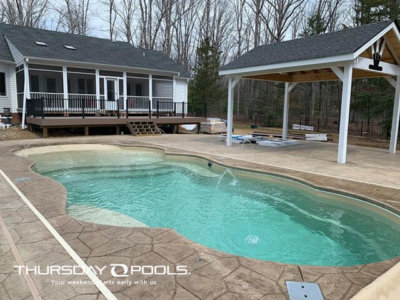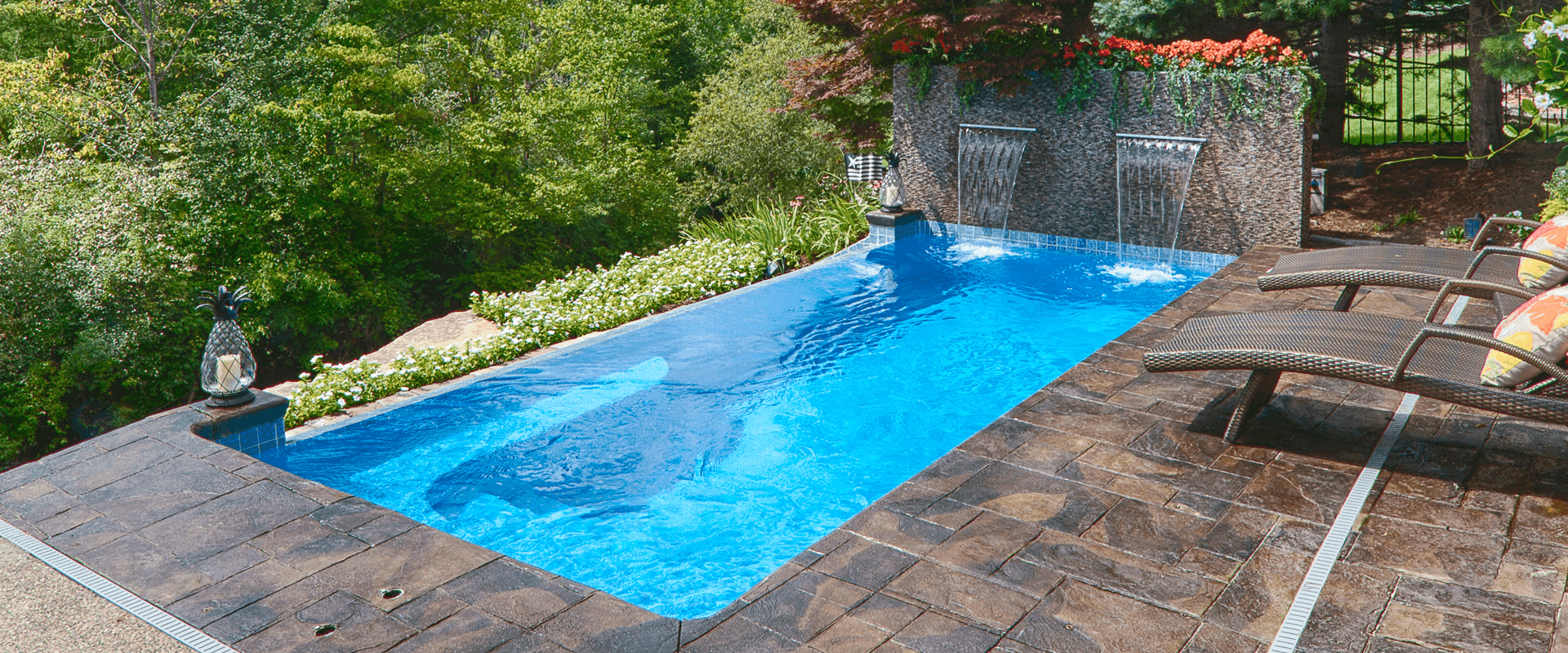877-929-7665
When Do I Start Winter Pool Maintenance?
 As the air gets crisp, the leaves begin to fall, and stores start stocking Christmas decorations alongside Halloween candy, it’s impossible to ignore the signals that winter is just around the corner. For pool owners, this seasonal shift prompts an important question: when is the right time to start winter pool maintenance? The answer depends largely on your local climate, whether you live in a region with harsh winters, mild winters, or something in between. Let’s dive into some essential considerations for winter pool maintenance for fiberglass pools based on the climate where you live, helping you keep your pool in top shape as winter approaches.
As the air gets crisp, the leaves begin to fall, and stores start stocking Christmas decorations alongside Halloween candy, it’s impossible to ignore the signals that winter is just around the corner. For pool owners, this seasonal shift prompts an important question: when is the right time to start winter pool maintenance? The answer depends largely on your local climate, whether you live in a region with harsh winters, mild winters, or something in between. Let’s dive into some essential considerations for winter pool maintenance for fiberglass pools based on the climate where you live, helping you keep your pool in top shape as winter approaches.
Moderate Climates: Year-Round Pool Care Without Closing
In moderate climates, such as Sun Belt or coastal regions, pool owners have the luxury of keeping their pools open year-round. However, this doesn’t mean they can take a hands-off approach to winter maintenance. Even though freezing temperatures aren’t a concern, several important factors remain to consider as the weather cools.
- Commit to Regular Maintenance: Just because you aren’t swimming as often during the winter doesn’t mean you can ignore the pool. You must still monitor and maintain your water balance even when the pool isn’t as frequently used. During the cooler months, the pool’s filter might not need as frequent backwashing as it does in the summer, but you will still need to maintain it. A dirty filter can reduce water flow, lead to cloudy water, and put undue stress on the pump.
- Annual System Inspection: Developing a yearly maintenance checklist is an excellent idea if you don’t fully close the pool. The inspection helps catch minor issues before they become expensive repairs. Some items to include on your inspection list include checking pumps, filters, safety equipment, and pool covers.
- Consider a Professional Service: If you’re using the pool less often, you might overlook minor issues that could develop over time. Pool owners in moderate climates may want to hire a professional maintenance service during the cooler months to ensure the pool remains in optimal condition. Hiring someone to maintain your pool can help prevent neglected problems from snowballing into costly repairs.
Semi-Cold Climates: Balancing the Risk of Delaying Pool Closure
In semi-cold climates like the southern Midwest or coastal regions flirting with freezing temperatures, pool maintenance becomes trickier. Pool owners in these areas often struggle with the decision of when to close their pools for the winter. Some years, temperatures might stay mild enough to keep the pool open longer, but delaying pool closure can be a gamble.
- Consult a Professional: Keeping the pool open in semi-cold climates is like driving over the speed limit—you might not get caught, but you’re still taking a risk. A sudden freeze could catch you off guard, leading to cracked pipes, damaged equipment, and expensive repairs. Consult with a local pool professional who understands the specific weather patterns in your region. They can advise on whether it’s safe to delay or if it’s time to start winterizing.
- Protect Your Equipment: Even if you decide to keep the pool open later in the season, paying attention to your equipment is essential. Many newer pool systems come with freeze protection features, automatically turning the pump on when temperatures drop near freezing. While this feature can help during short cold snaps, it’s not a permanent solution. If your equipment doesn’t have freeze protection or if you experience prolonged freezing temperatures, the best solution is to winterize your pool completely.
Cold Climates: The Necessity of Earlier Pool Closure
Closing the pool is essential in regions with consistent freeze/thaw cycles, such as the northern U.S. If you wait too long, freezing temperatures can cause severe damage to your pool’s structure and equipment. Winterizing early and thoroughly is the best way to avoid costly repairs and ensure your pool stays in tip-top condition until spring.
- Beat the 50-Degree Days: As temperatures drop, water inside your pool and plumbing can freeze, expand, and cause cracks in pipes, filters, and pumps. In cold climates, the general rule is to winterize the pool before temperatures consistently drop into the 50s (Fahrenheit) during the day. Starting the closing process earlier allows plenty of time to prepare without racing against sudden drops in temperature.
- A Thorough Closing Process: The key is a thorough closing process when preparing for winter in cold climates. It’s not just about covering the pool—it’s about balancing the water chemistry and ensuring all equipment is properly winterized. Taking the time to close the pool properly can save you from expensive repairs and a stressful opening process in the spring.
- Plan Well for a Better Spring: Properly balancing the water before closing ensures it stays clean and clear through the winter, making spring maintenance much more manageable. You’ll spend less time cleaning and repairing and more time swimming.
Protect Your Investment, Enjoy the Holidays
Proper winter maintenance paves the way for a smooth and hassle-free spring opening. Consult your local pool professional to tailor your winter pool maintenance to your specific climate and address potential issues early. This way, you can relax and enjoy the holiday season and know that your pool is well-protected.
